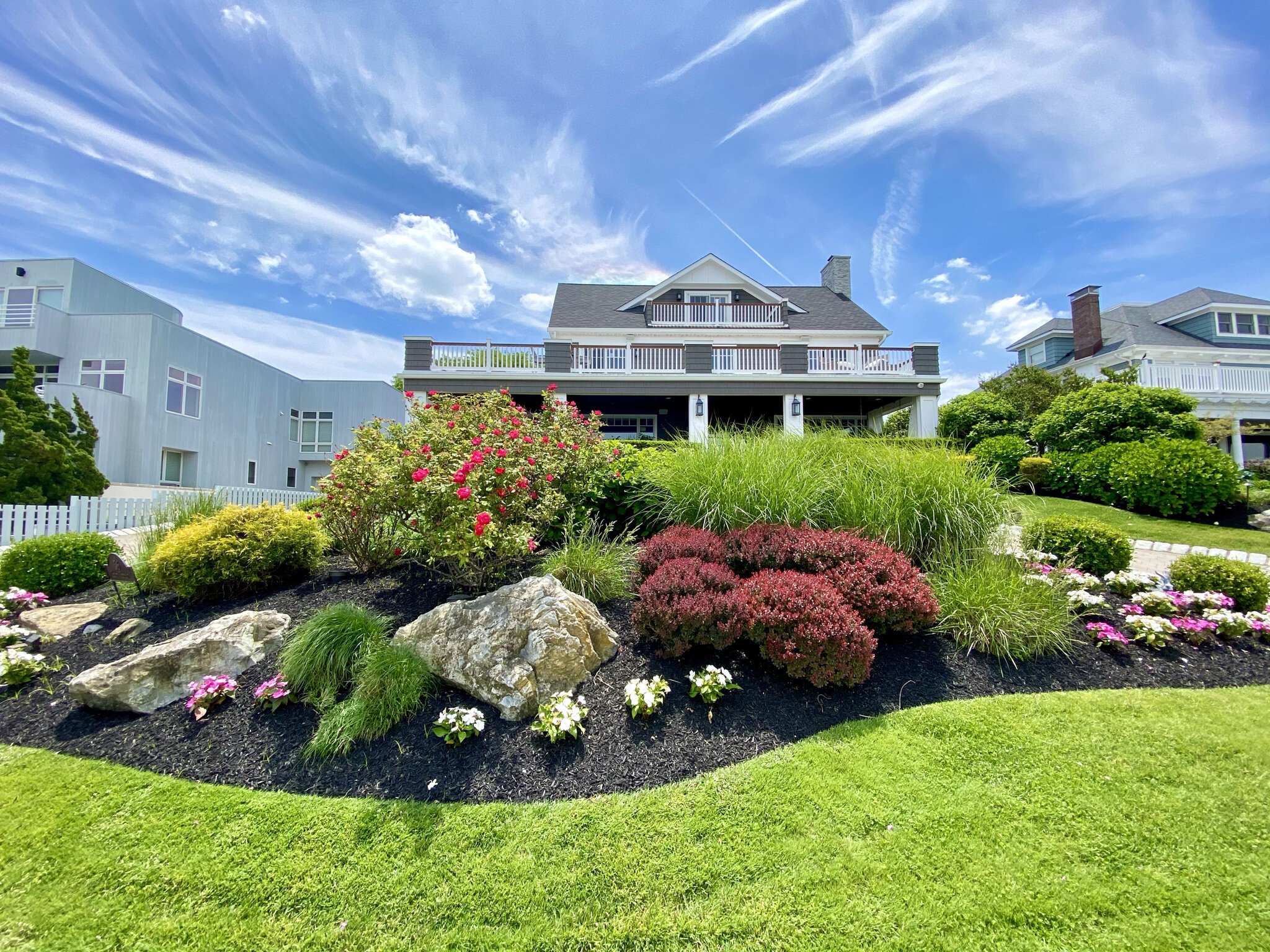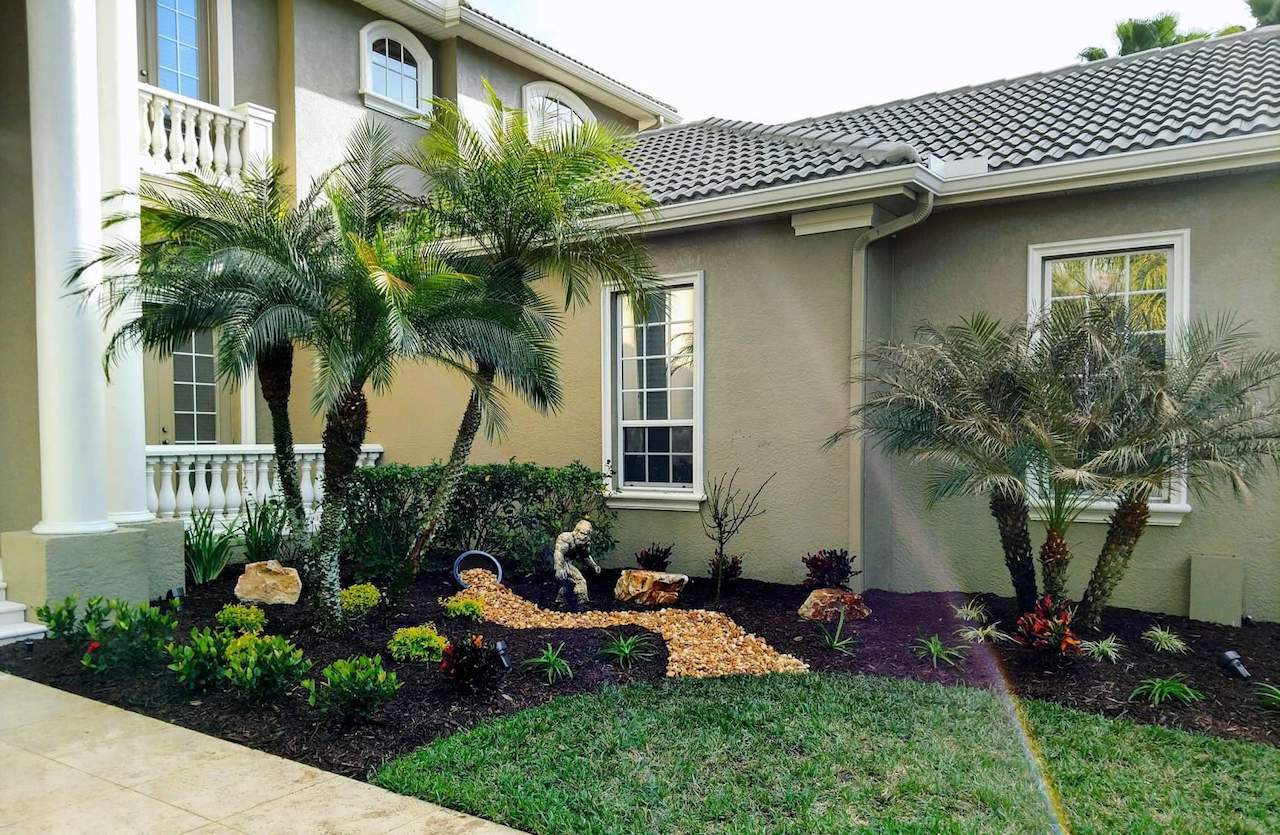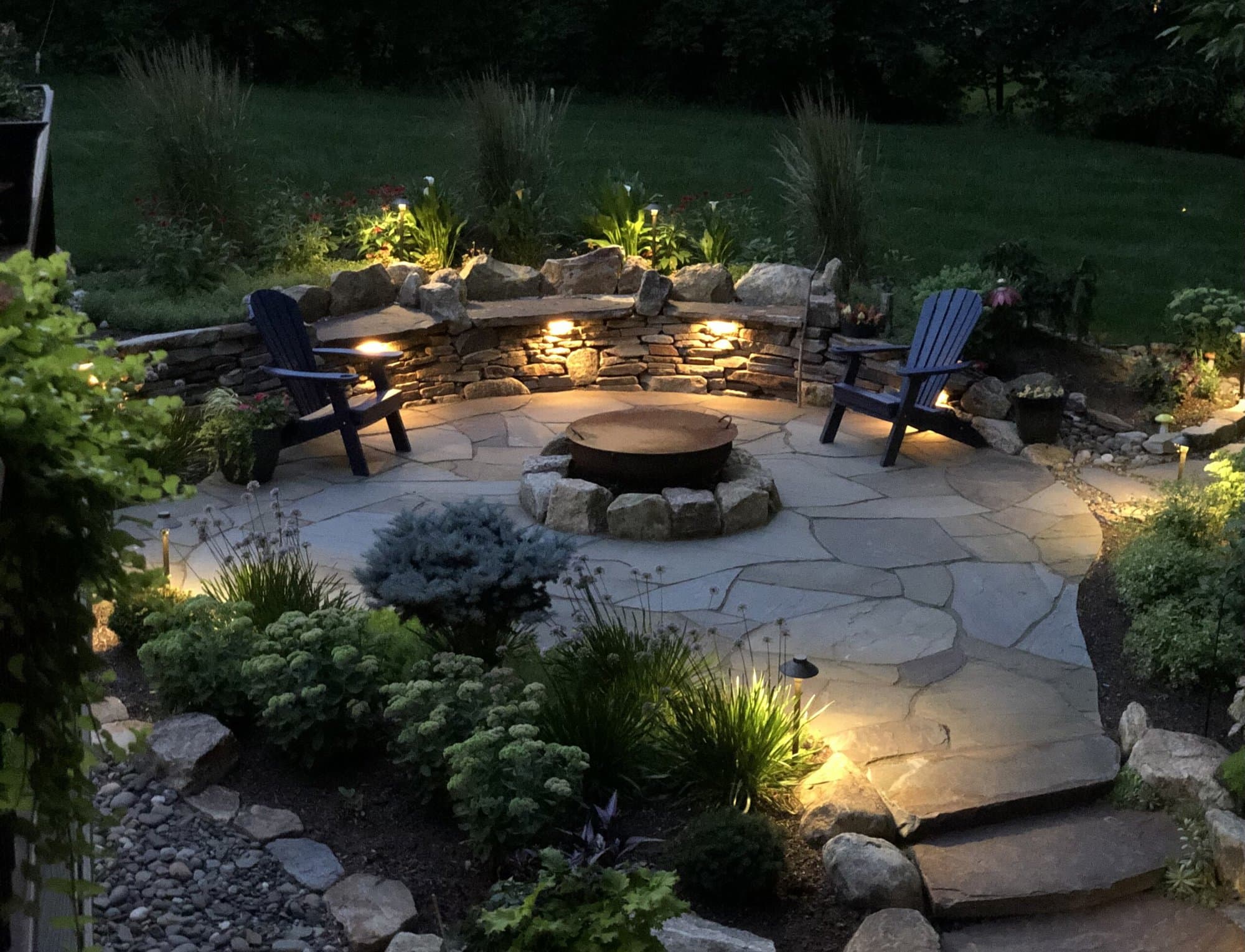Leading Tips for Enhancing Your Yard with Palm Desert Landscaping Ideas
Leading Tips for Enhancing Your Yard with Palm Desert Landscaping Ideas
Blog Article
A Comprehensive Overview to Designing and Implementing Effective Landscaping Solutions
The art and science of landscape design prolong past plain visual appeals; they involve a thoughtful combination of design concepts, ecological stewardship, and practical application. A comprehensive guide to effective landscaping solutions begins with a comprehensive understanding of your outdoor space, highlighting the relevance of unity, balance, and proportion. As we check out sustainable techniques and the option of suitable vegetation, the ramifications for biodiversity and community well-being come to be progressively evident. What approaches can one use to ensure these landscapes not only prosper however likewise flourish in consistency with their surroundings?

Understanding Landscape Design Concepts
One might question what fundamental components add to reliable landscape style. At its core, effective landscape style hinges on a number of essential principles that direct the arrangement and selection of components within an area. These principles consist of unity, proportion, equilibrium, and rhythm, each offering to develop a harmonious outdoor atmosphere.
Unity describes the cohesive connection amongst various elements, ensuring that they collaborate aesthetically and functionally. Balance can be achieved via symmetrical or unbalanced arrangements, allowing the landscape to feel secure and welcoming. Proportion involves comprehending the range of components in relationship to each other and the surrounding atmosphere, promoting aesthetic harmony and comfort.

Examining Your Outdoor Room
Prior to implementing the principles of landscape layout, a detailed assessment of your outdoor room is crucial. This first assessment helps define the range of your landscape design task and guarantees that your design lines up with the unique features of your property. Begin by assessing the measurements of your space, taking precise dimensions to recognize the readily available location for numerous aspects such as patio areas, paths, and yards.
Next, observe the existing functions of your landscape, consisting of topography, dirt top quality, and water drainage patterns. These factors considerably affect plant selection and placement. Additionally, analyze the sunshine exposure throughout various locations throughout the day, as this will impact the kinds of plants that grow in your garden.
Think about the microclimates created by structures, trees, and various other obstacles, as they can influence temperature and dampness levels. Take note of any existing plants or hardscape aspects that you desire to remove or keep. This extensive examination prepares for a knowledgeable and reliable landscaping solution, ensuring that your style is not just visually pleasing yet sustainable and additionally useful for several years ahead.
Sustainable Landscape Design Methods
Incorporating lasting landscape design strategies is important for creating an environmentally accountable outside area. These practices not only promote eco-friendly equilibrium however additionally improve the functional and visual worth of a landscape. One fundamental technique is the usage of indigenous plants, which need much less water and upkeep while supporting regional wild animals. Carrying out effective watering systems, such as drip irrigation, lessens water waste and makes certain that plants obtain ample wetness.

An additional efficient technique is the tactical placement of trees and hedges to provide natural windbreaks and shade, thus lowering energy prices (Palm Desert Landscaping). Rain yards can be incorporated right into the landscape layout to handle stormwater runoff efficiently, filtering toxins prior to get more they enter waterways
Choosing the Right Plants
Picking the right plants for your landscape is vital to accomplishing both visual appeal and eco-friendly consistency. The process starts with an understanding of your regional climate, dirt conditions, and the certain microenvironments within your landscape. Assessing aspects such as sunshine exposure, moisture degrees, and existing vegetations will assist you select plants that grow in your unique setting.
Think about including native plants, as they are well-adapted to neighborhood problems, need less upkeep, and support local wildlife. In addition, choosing a varied array of varieties can improve biodiversity while reducing the threat of disease and pest break outs. It is necessary to assess the growth practices, growing periods, and seasonal shades of prospective plants to create a dynamic and cohesive landscape.
In addition, believe concerning the planned use of the room; as an example, if the location will experience high foot web traffic, decide for resistant ground covers. By attentively selecting plants that align with both your aesthetic goals and ecological demands, you can create a lasting landscape that not only enhances your residential property however additionally contributes favorably to the bordering ecosystem.

Application and Maintenance Techniques
As soon as the ideal plants have actually been selected for your landscape, the emphasis shifts to effective implementation and ongoing upkeep strategies. Successful setup begins with correct website prep work, which includes soil screening to determine nutrient degrees and pH, followed by changing the dirt as needed. Meticulously prepare plants according to their development behaviors and light requirements, making certain ample spacing to advertise healthy development.
Irrigation is a vital element of implementation. Establish a watering timetable that considers the specific requirements of each plant varieties, readjusting for seasonal adjustments. Utilizing drip watering systems can enhance water performance and lower drainage.
Upkeep techniques need to be implemented to make certain the durability and vitality of your landscape. Regular tasks consist of weeding, mulching, and pruning to control development and stop condition. Fertilizing needs to be performed based upon soil examinations, supplying the my site essential nutrients without over-fertilizing.
Keeping track of for bugs and diseases is necessary; early discovery can prevent significant damages. Seasonal adjustments to maintenance routines, such as winterizing perennials and preparing for springtime growth, will certainly make certain that your landscape remains visually appealing and healthy year-round.
Verdict
Effective execution and recurring upkeep additionally make certain the longevity and vigor of landscapes. By integrating these elements, landscapes can be changed into lovely, useful atmospheres that promote biodiversity and add favorably to area well-being.
One might question what foundational components add to effective landscape layout. At its core, effective landscape style hinges her comment is here on a number of key principles that assist the arrangement and option of components within a space.Choosing the right plants for your landscape is crucial to achieving both aesthetic allure and environmental harmony. It is vital to evaluate the growth habits, flowering periods, and seasonal shades of potential plants to develop a dynamic and cohesive landscape.
As soon as the ideal plants have been chosen for your landscape, the emphasis changes to effective implementation and recurring maintenance techniques.
Report this page